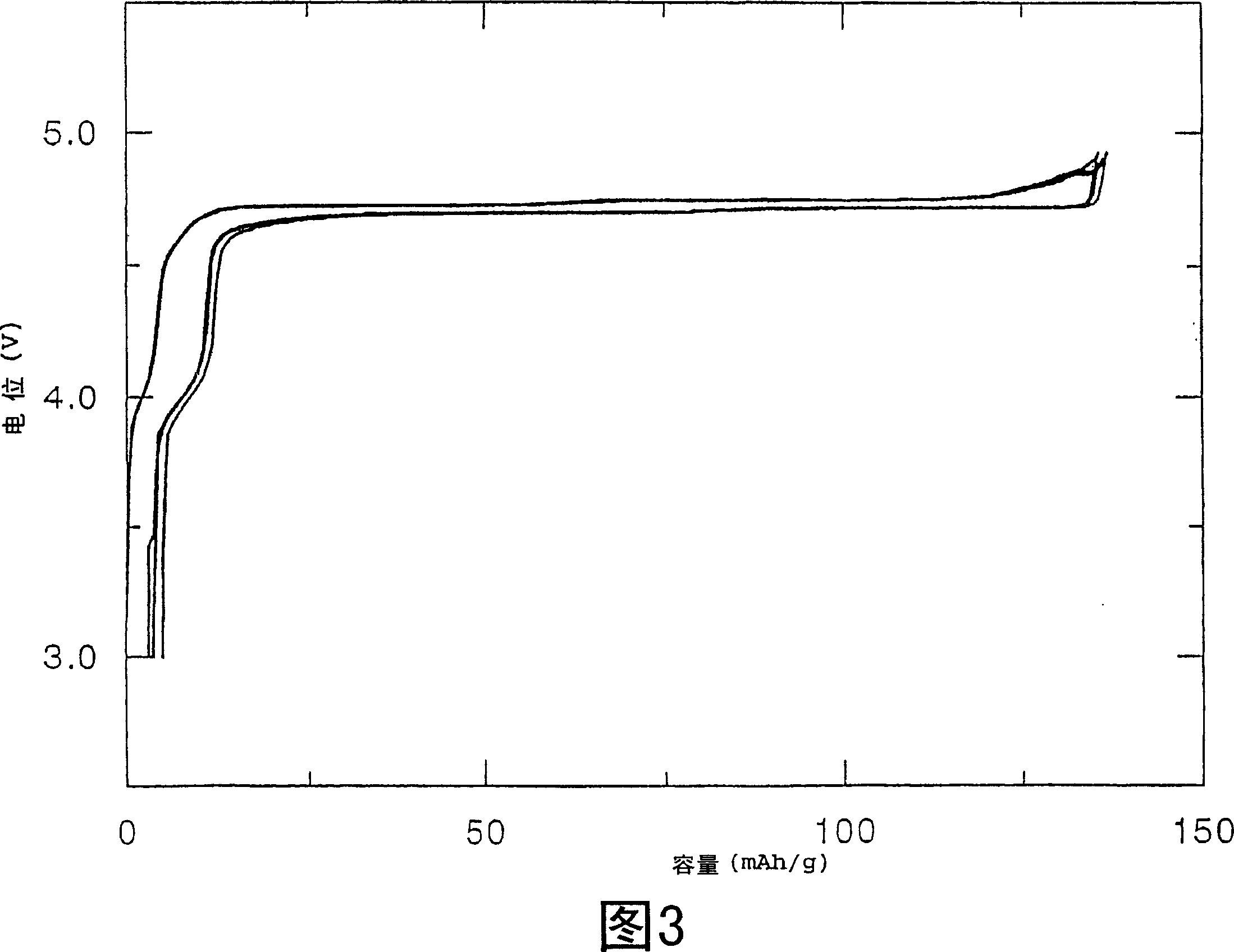Positive electrode active material, production method thereof and non-aqueous electrolyte secondary battery
A positive electrode active material and non-aqueous electrolyte technology, applied in the field of non-aqueous electrolyte secondary batteries, can solve problems such as poor capacity and poor overcharge cycle life
- Summary
- Abstract
- Description
- Claims
- Application Information
AI Technical Summary
Problems solved by technology
Method used
Image
Examples
Embodiment 1
[0270] Three different types of cathode active material samples were prepared under the synthesis conditions shown in section (3) above. The [Ni 1 / 4 mn 3 / 4 ](OH) 2 and LiOH·H 2 O Thoroughly mix the resulting mixture to form particles, which are then fired to obtain a positive electrode active material. Therefore, the composition of the resulting cathode active material is Li[Ni 1 / 2 mn 3 / 2 ]O 4 . Oxygen content varies according to synthesis conditions. The electrochemical analysis of the obtained cathode active material was performed in the manner shown in the above section (1).
preparation Embodiment 1
[0272] The ambient temperature was increased from room temperature to 1000°C in approximately 3 hours, maintained at 1000°C for 12 hours, and then decreased from 1000°C to room temperature in 2 hours.
preparation Embodiment 2
[0274] Increase ambient temperature from room temperature to 1000°C in approximately 3 hours, maintain at 1000°C for 12 hours, decrease from 1000°C to 700°C in 30 minutes, maintain at 700°C for 48 hours, then increase from 700°C in 1.5 hours °C was lowered to room temperature.
PUM
| Property | Measurement | Unit |
|---|---|---|
| particle diameter | aaaaa | aaaaa |
| particle diameter | aaaaa | aaaaa |
| thickness | aaaaa | aaaaa |
Abstract
Description
Claims
Application Information
 Login to View More
Login to View More - R&D
- Intellectual Property
- Life Sciences
- Materials
- Tech Scout
- Unparalleled Data Quality
- Higher Quality Content
- 60% Fewer Hallucinations
Browse by: Latest US Patents, China's latest patents, Technical Efficacy Thesaurus, Application Domain, Technology Topic, Popular Technical Reports.
© 2025 PatSnap. All rights reserved.Legal|Privacy policy|Modern Slavery Act Transparency Statement|Sitemap|About US| Contact US: help@patsnap.com



